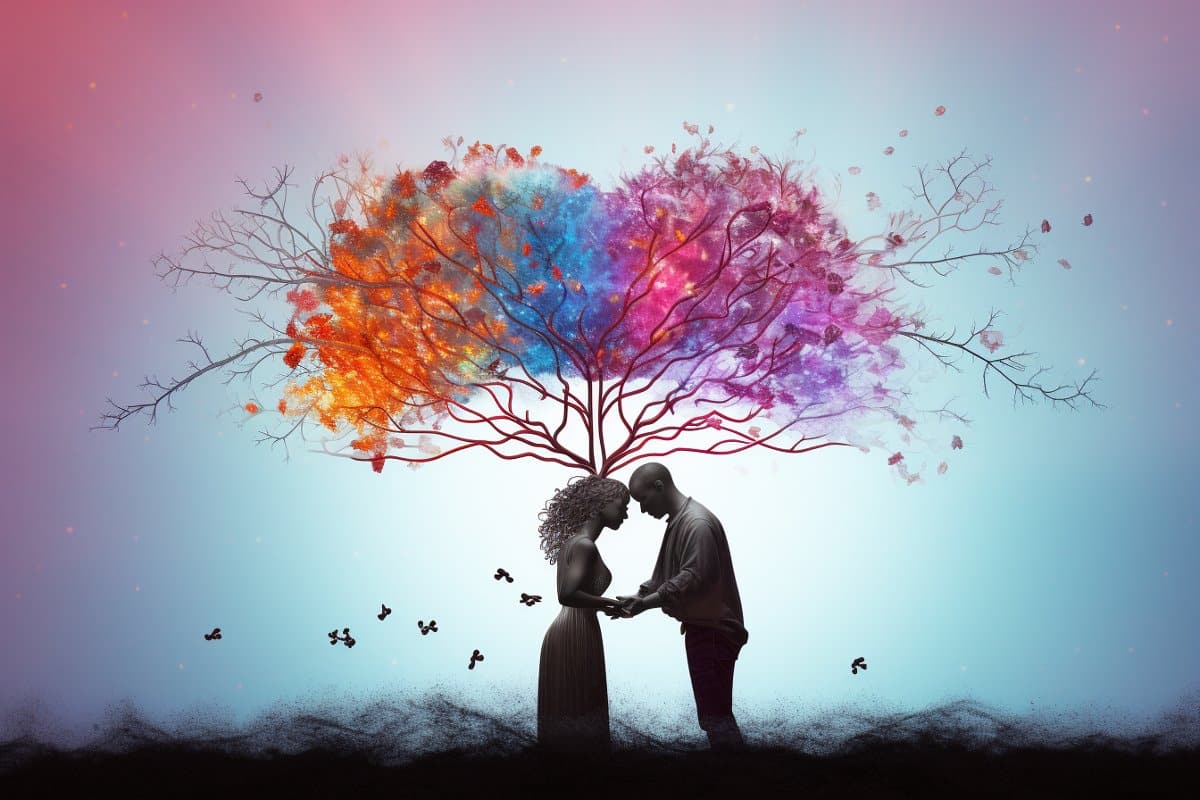Summary: In a novel study, the link between romantic love and the brain’s behavioral activation system (BAS) has been explored for the first time.
The study surveyed 1,556 young adults who identified themselves as being “in love,” focusing on their emotional responses to their partners, their behaviors around them, and their level of focus on their loved ones. The findings revealed that romantic love leads to distinct changes in brain activity, making the object of affection the central focus of one’s life.
This research sheds light on the mechanisms underlying romantic love, which has been a subject of curiosity for centuries.
Key Facts:
- The study is the first of its kind to investigate the connection between the brain’s behavioral activation system (BAS) and romantic love.
- Researchers found that romantic love significantly alters brain activity, with a heightened focus on the loved one.
- The next phase of the study will delve into gender differences in approaches to love and identify four distinct types of romantic lovers worldwide.
Source: University of South Australia
Love is blind, the saying goes, and thanks to a world-first Australian study, we are now a step closer to understanding why.
It is well known that romantic love changes the brain, releasing the so-called love hormone oxytocin, responsible for the euphoria we feel when falling in love.
Now, researchers from the ANU, University of Canberra and University of South Australia have measured how a part of the brain is responsible for putting our loved one on a pedestal in that first flush of romance.
In the world’s first study investigating the link between the human brain’s behavioural activation system (BAS) and romantic love, researchers surveyed 1556 young adults who identified as being “in love”.
The survey questions focused on the emotional reaction to their partner, their behaviour around them, and the focus they placed on their loved one above all else.
It turns out that when we are in love, our brain reacts differently. It makes the object of our affections the centre of our lives.
ANU lead researcher and PhD student Adam Bode says the study – recently published in the journal Behavioural Sciences – sheds light on the mechanisms that cause romantic love.
“We actually know very little about the evolution of romantic love,” Bode says. As a result, every finding that tells us about romantic love’s evolution is an important piece of the puzzle that’s just been started.”
“It is thought that romantic love first emerged some five million years ago after we split from our ancestors, the great apes. We know the ancient Greeks philosophized about it a lot, recognising it both as an amazing as well as traumatic experience. The oldest poem ever to be recovered was in fact a love poem dated to around 2000 BC.”
University of Canberra academic and UniSA Adjunct Associate Professor, Dr Phil Kavanagh, says the study shows that romantic love is linked to changes in behaviour as well as emotion.
“We know the role that oxytocin plays in romantic love, because we get waves of it circulating throughout our nervous system and blood stream when we interact with loved ones,” Dr Kavanagh says.
“The way that loved ones take on special importance, however, is due to oxytocin combining with dopamine, a chemical that our brain releases during romantic love. Essentially, love activates pathways in the brain associated with positive feelings.”
The next stage of the research involves investigating the differences between men and women in their approach to love, and a worldwide survey identifying four different types of romantic lovers.
About this neuroscience and love research news
Author: Candy Gibson
Source: University of South Australia
Contact: Candy Gibson – University of South Australia
Image: The image is credited to Neuroscience News
Original Research: Open access.
“Romantic Love and Behavioral Activation System Sensitivity to a Loved One” by Adam Bode et al. Behavioral Sciences
Abstract
Romantic Love and Behavioral Activation System Sensitivity to a Loved One
Research investigating the mechanisms that contribute to romantic love is in its infancy. The behavioral activation system is one biopsychological system that has been demonstrated to play a role in several motivational outcomes.
This study was the first to investigate romantic love and the behavioral activation system.
In study 1, the Behavioral Activation System—Sensitivity to a Loved One (BAS-SLO) Scale was validated in a sample of 1556 partnered young adults experiencing romantic love.
In study 2, hierarchical linear regression was used to identify BAS-SLO Scale associations with the intensity of romantic love in a subsample of 812 partnered young adults experiencing romantic love for two years or less.
The BAS-SLO Scale explained 8.89% of the variance in the intensity of romantic love. Subject to further validation and testing, the BAS-SLO Scale may be useful in future neuroimaging and psychological studies.
The findings are considered in terms of the mechanisms and evolutionary history of romantic love.








